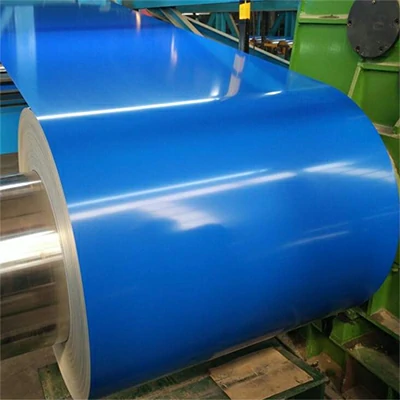Pre-painted galvanized iron (PPGI) is a coated steel product that undergoes a pre-treatment process and is then coated with a layer of paint or other protective coating. While PPGI provides enhanced corrosion resistance and durability, its response to abrasive or mechanical wear depends on various factors, including the type of coating, coating thickness, and the severity of the wear.
Here’s how PPGI generally responds to abrasive or mechanical wear:
- Coating Types:
- PPGI coatings can include various types such as polyester, polyvinylidene fluoride (PVDF), polyurethane, and others. The type of coating significantly influences the resistance to wear. For instance, PVDF coatings are known for their excellent resistance to abrasion.
- Coating Thickness:
- The thickness of the coating on the PPGI affects its ability to withstand wear. Thicker coatings generally provide better protection against abrasion. Manufacturers often specify the minimum and maximum coating thickness for different applications.
- Surface Hardness:
- The hardness of the coating influences its resistance to abrasion. Some PPGI coatings are designed to have a hard surface, which helps in reducing the impact of mechanical wear. The hardness is determined by the type of resin and additives used in the coating.
- Application Environment:
- The environmental conditions in which PPGI is used can impact its response to wear. Abrasive particles, dust, or other contaminants in the environment may contribute to wear. PPGI used in harsh or abrasive environments may require a more robust coating.
- Proper Handling and Maintenance:
- Proper handling during transportation, installation, and maintenance practices can also affect the wear resistance of PPGI. Avoiding unnecessary friction, China PPGI manufacturers dragging, or scraping can help preserve the integrity of the coating.
- Testing and Certification:
- Some PPGI coatings undergo standardized testing for abrasion resistance. Certifications and test results provided by manufacturers can offer insights into the coating’s performance under different wear conditions.
- Topcoats and Protective Layers:
- Some PPGI products may have additional topcoats or protective layers designed specifically to enhance resistance to mechanical wear. These layers provide an extra barrier against abrasion.
- Impact Resistance:
- While not directly related to abrasive wear, the impact resistance of PPGI is also an important consideration. Coatings that exhibit good impact resistance are generally more durable in the face of mechanical stresses.
- Regular Inspection and Maintenance:
- Periodic inspection of PPGI surfaces and prompt maintenance can help identify and address any areas where wear or damage may be occurring. Touch-up coatings or protective treatments can be applied as needed.
- Coating Flexibility:
- The flexibility of the coating can influence its ability to withstand bending or deformation without cracking or peeling. Coatings with good flexibility are generally more resistant to mechanical wear in applications where the material may flex.
It’s important to note that while PPGI provides a protective coating, no coating is entirely immune to wear under severe or abrasive conditions. The performance of PPGI in response to mechanical wear should align with the specific requirements of the intended application, and users should follow manufacturer recommendations for handling and maintenance. Additionally, consulting with coating specialists or engineers can provide valuable insights into selecting the most suitable PPGI product for a given environment.
